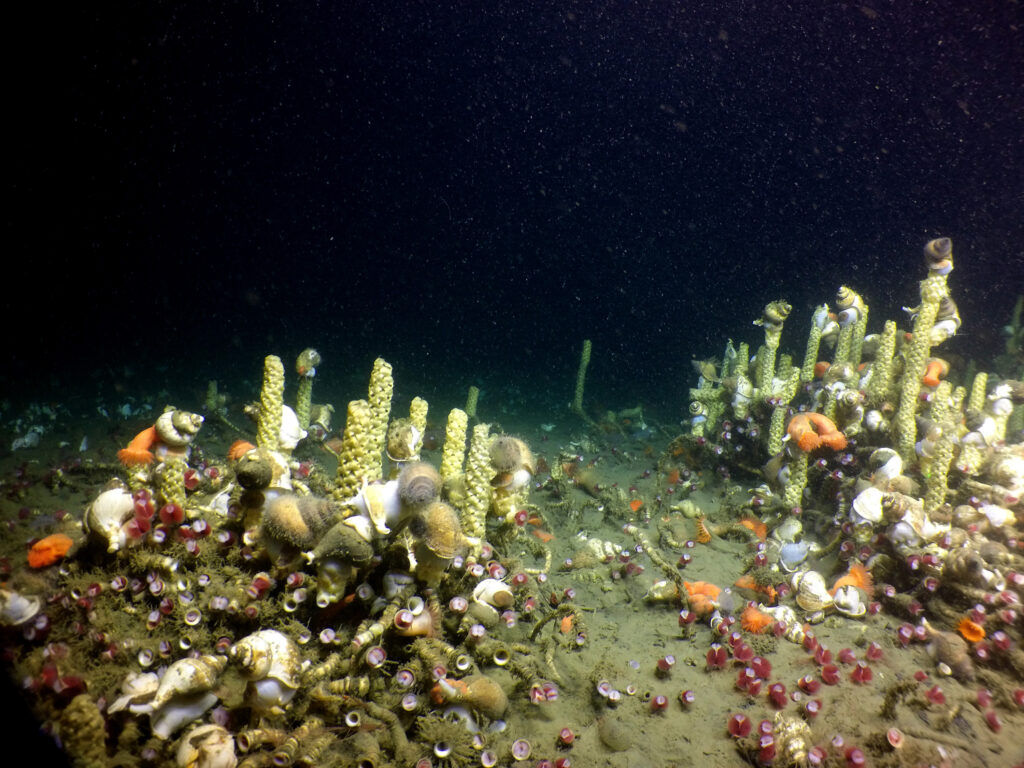DOSI Deep-Sea Round-Up

Seeps are home to many animals, increasing biodiversity in the deep by creating food from chemical energy and structure for deep-sea animals to lay their eggs on. For example, this image shows a mass of snails (gastropods called Neptunea) and their egg masses (the yellow towers) using clumps of tubeworms as a place to anchor them in the otherwise soft sediment of the deep. Image courtesy of Ocean Exploration Trust – Cruise NA095.
This week we celebrate International Women in Science Day. As a network with many female leaders and members, we have a lot of people to thank for all that DOSI has achieved and strives to achieve. Above all, a big thank you for inspiring the next generation of deep-ocean stewards.
New deep-sea papers this week – an important new guide on the process of naming animals in images – a particular challenge for deep-sea biologists who rarely get to study physical specimens. Also a global look at the trends in plastic debris ingestion by fish – results which indicate worsening incidence rates but also offers silver linings. There are new opportunities at all experience levels this week, and links to important online webinars you may have missed. Enjoy your Deep-Sea Round-Up.
CLICK FOR YOUR DEEP-SEA ROUND-UP
SIGN UP NOW – TO GET IT STRAIGHT TO YOUR INBOX

